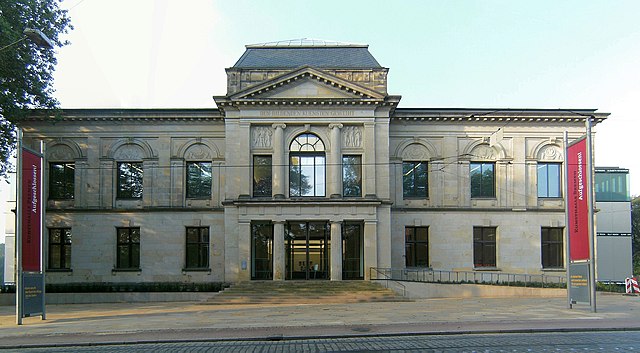The Baldin Collection is a group of 364 masterpieces removed from Germany to the Soviet Union by Soviet Army officer Victor Baldin at the end of World War II. The ensemble consists of 362 drawings and two paintings by Dürer, van Gogh, Manet, Rembrandt, Rubens, Titian and other famous artists. Historically part of the collection at the Kunsthalle Bremen, the Baldin group came from a much larger cache of artworks stored by the Germans in a Brandenburg castle to protect it from air raids. In 1945 the castle was occupied by the Red Army and the storage vaults were looted, mainly by Russian soldiers but also by the local German population. The works Baldin took were then hidden at a Soviet Research Institute for many years. In 1991 the collection was moved to the Hermitage Museum in Saint Petersburg where its existence was revealed to the world in 1992. It remains there today.

Cypresses in Starry Night (F 1540, JH 1732) by Vincent van Gogh (1889). The only known pen and ink study of The Starry Night and one of the most famous pieces in the "Baldin Collection".
The Kunsthalle in Bremen, Germany
Frauenbad by Albrecht Dürer (1496). Not part of the Baldin Collection itself, but taken by the same military unit from the same storage vaults at Karnzow Castle
Nikolai Gubenko in 2005
The Starry Night is an oil-on-canvas painting by the Dutch Post-Impressionist painter Vincent van Gogh painted in June 1889. It depicts the view from the east-facing window of his asylum room at Saint-Rémy-de-Provence, just before sunrise, with the addition of an imaginary village. It has been in the permanent collection of the Museum of Modern Art in New York City since 1941, acquired through the Lillie P. Bliss Bequest. Widely regarded as Van Gogh's magnum opus, The Starry Night is one of the most recognizable paintings in Western art.
The Starry Night
The Monastery of Saint-Paul de Mausole
Van Gogh's bedroom in the asylum
F1548 Wheatfield, Saint-Rémy de Provence, Morgan Library & Museum








